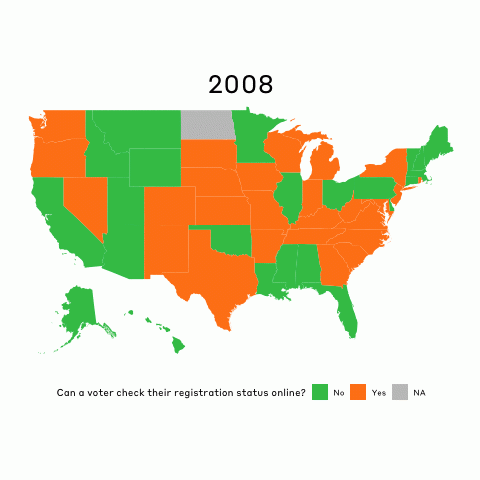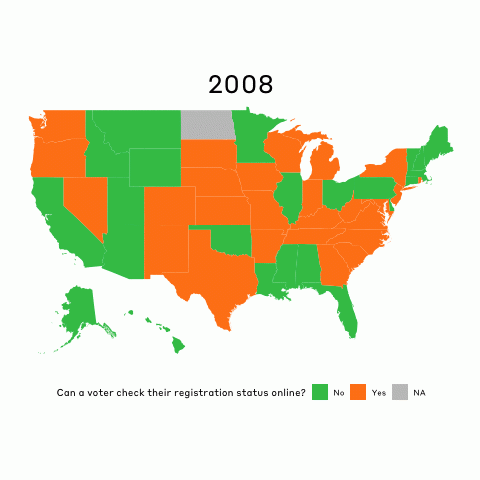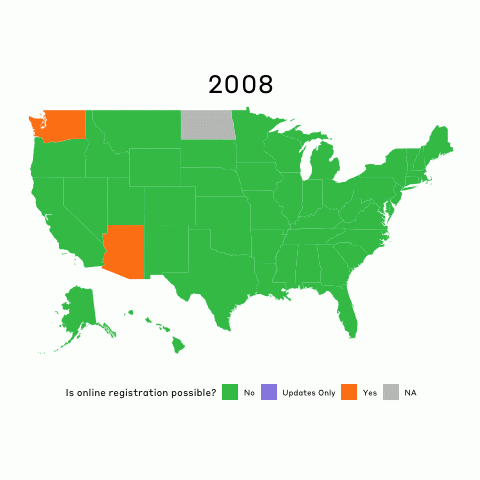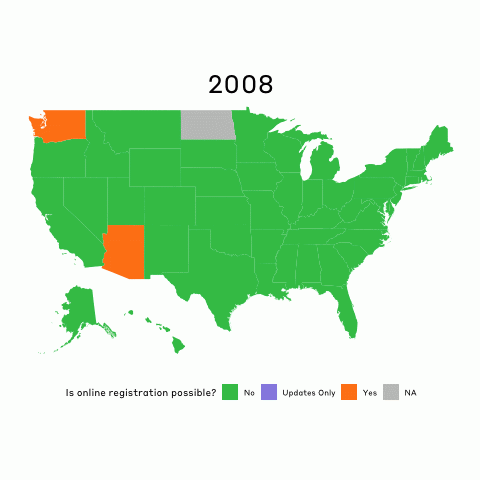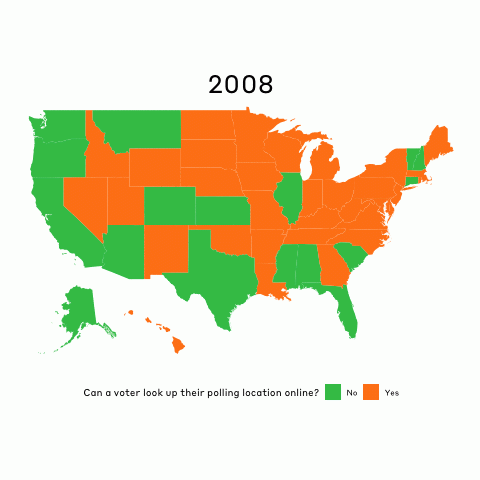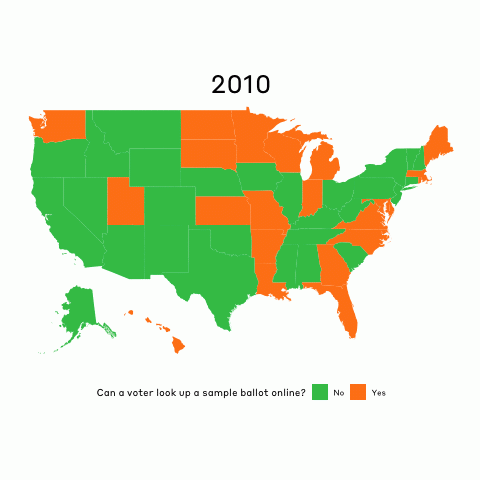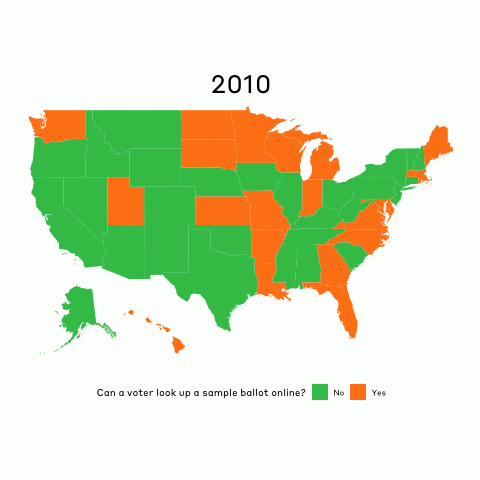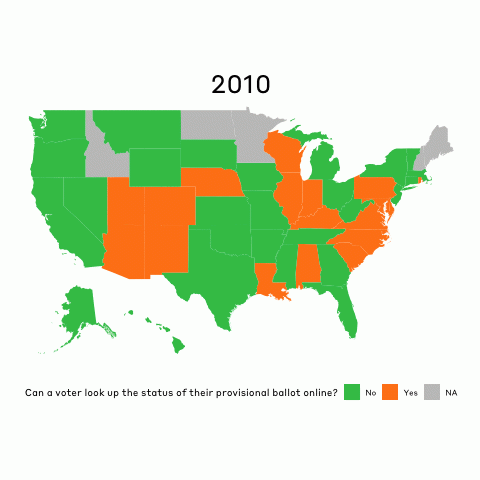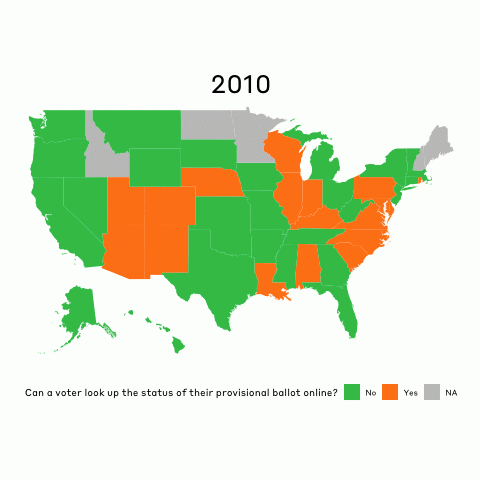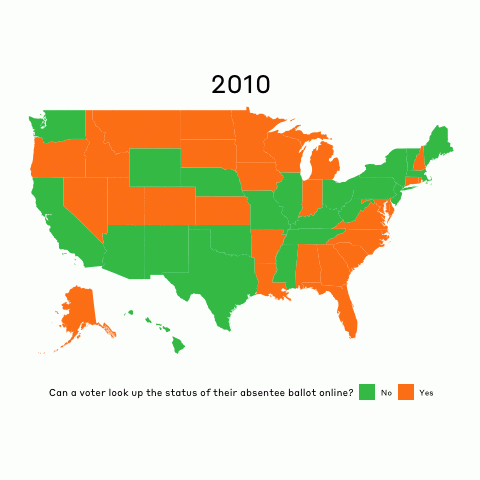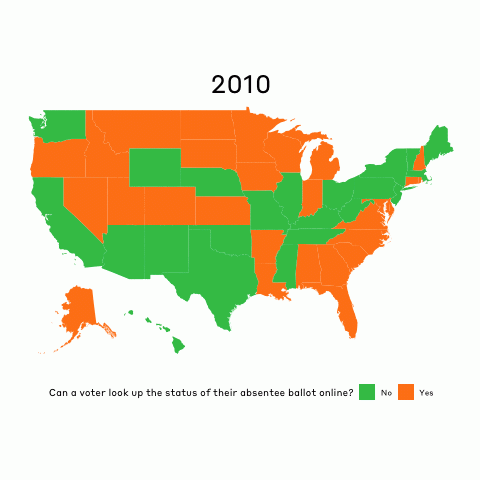As internet access has expanded and become increasingly ubiquitous throughout the United States, so has the number of states exploring ways to use the internet to streamline some of the processes involved in an election. As part of its overall evaluation of election administration, the Elections Performance Index (EPI) measures how well states use online tools to make voting more accessible and more convenient for voters. To do so, it looks at specific tools that states can (and do) use to ease voting.
There are two indicators in the EPI that inform this. The first counts the number of voting information lookup tools. A state receives credit for having each of the five tools that allow voters to:
- check the status of their provisional ballot online
- check the status of their absentee ballot online
- see a sample ballot online
- check their registration status online
- look up the location of their polling location.
These five tools have been used as part of the EPI’s measurements since the index for the 2010 election — in 2008, when the index was first developed, only two indicators were included in the lookup tool indicator. Initially, the EPI just included tools that gave voters the ability to check their registration status and the ability to look up the location of their polling station. The other three tools were added in the second release of the index as their use spread (and as voters increasingly turned to the internet first for customer support and other services — including election information).
In addition to counting these tools, the EPI also scores states on the availability of online voter registration, which is a separate indicator in itself. States that allow new voters to register online receive full marks for this indicator; if they don’t offer this but do let existing voters update their registration online, they also receive “half credit.”
Overall, the number of tools available in each state has grown substantially. I’ve put together a series of animations showing just how much access to online voting information tools has changed since the indicator was added to the EPI.
Each of the tools tracked in the EPI helps streamline the process of voting — but how? I’ll explain how each of them helps in turn, by taking them in the order in which they’re used during the process of voting.
First, let’s start with being able to look up your registration status online. Take a look at how the availability of this tool has changed since 2008:
With the exception of North Dakota, which does not have voter registration at all, by 2016, every state but two had the ability for a voter to be able to look up their registration status online. If this doesn’t seem like much, consider what it means for states with registration deadlines and no same-day registration. By offering a tool for voters to look up their registration status, a state gives potential voters an easy and convenient way to check what they need to do in order to participate in an upcoming election. (And, in fairness to the two remaining holdouts, both have Election Day registration.)
If, once a person checks their status, they discover they are not registered to vote, an increasing number of states allow eligible voters to register online:
Several states, such as Texas and Michigan, allow partial voter registration online — that is, they allow voters to update their registration information online, but they do not allow new voters to register for the first time through that online system. Allowing voters to register or update their information online saves voters a significant amount of time and travel, allowing them register with a few clicks, instead of undertaking a trip to city hall or wondering if their voter registration card will arrive at its destination.
Once a voter is registered to vote, they then need to determine where they will vote. What precinct are they in? Where is their polling place? By 2014, all fifty states provided voters with a way to look up their polling location online, based on their address. States were quick to adopt this tool; by 2010, every state except for California and Vermont had made it available to their residents. As a tool for voters, the ability to look up their polling place easily goes hand-in-hand with an online registration status lookup, and improves the accessibility of the information they need in order to cast their ballot.
Both of these tools are used to streamline the process required for a voter to register and identify where they are supposed to cast their ballot. However, many voters would also like to know for whom they will be casting their ballots. Confusing ballots or unfamiliar choices can also be a stumbling block for voters, one that is easily resolved.
In order to let voters preview what their ballot will look like on Election Day, an increasing number of states provide an online option for voters to look up what will be on the ballot:
So, we’ve made it through the voting process a voter can see directly — but there are still two remaining lookup tools that are included as important measures in the EPI. Both come into play after a voter has cast their ballot, and allow a voter to track what happens to their vote, depending on the type of ballot they cast.
First, if the voter cast a provisional ballot for any number of reasons, some states offer the opportunity for them to look up the status of their provisional ballot online, saving them from spending time visiting or calling their local elections office in order to inquire about their cast provisional ballot — and saving time and human resources for that local office, as well. These tools have become more widespread since 2010, allowing voters to stay more informed about their provisional vote after it is cast and increasing their trust that it indeed goes through the proper processes.
Similarly, if a voter chooses or needs to vote absentee, many states offer a tool allowing them to inquire about the status of their absentee ballot and to verify whether or not it has been received. This can also increase confidence in elections, by allowing voters an easy way to verify that their ballot has indeed been counted, and not vanished magically into the ether.
In short, online tools are extremely useful to make the process of voting more accessible to voters throughout every step of the election process, from registering to vote to making sure that their ballot has been counted. The spread of these tools in the past decade may also be a harbinger of more to come, as states explore new ways and tools to make the process of voting easier, more convenient, and more accessible.
